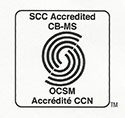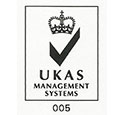Glucose
 |
 |
 |
|
Clinically significant chromatic interference is a serious problem in traditional glucose detection; however, the problem is not widely recognized. The reason for the lack of awareness of chromatic interference in glucose assays is that the problem occurs with only some types of samples:
-
-
-
-
- Ketoacidotic samples of diabetic patients
- Hypoglycemic patients
-
-
-
Diabetics in ketoacidosis tend to have high levels of serum fatty acids and turbid sera. Glucose test results for diabetics with low glucose levels may appear as normal because of chromatic interferences.
Laboratories frequently assess chromatic interference in their glucose method using control sera with glucose levels near the upper limit of normal. The control sera are not turbid and do not contain high levels of free fatty acids. Consequently, the serious problem of ketoacidotic patient samples is underestimated, especially when the patient's glucose level is low.
The Synermed® method uses infrared detection between 650-660 nm which allows accurate detection of glucose in problem samples.
-
-
-
-
- Single Liquid-Stable Ready-to-Use Reagent
- Minimal Interference from Serum Bilirubin, Hemoglobin and Lipemia
- Improved Performance with Keto-acidotic Patients
-
-
-
Principles of the Reaction
Glucose oxidase catalyzes the conversion of glucose to gluconolactone which then forms gluconic acid and hydrogen peroxide.
glucose
H2O + O2 + beta-D-glucose -> gluconolactone -> gluconic acid + H2O2
oxidase
The hydrogen peroxide reacts with the Synermed chromogen in the presence of peroxidase (POD) to form a blue azo dye which is quantitated at 660 nm.
Analytical Range
Most applications of the procedure have been found to be linear from 0 to 900 mg/dL (50 mmol/L) glucose.
Expected Values
The reference range for glucose for adults is reported to be: 65-120 mg/dL (3.6-6.7 mmol/L)
Special Performance Characteristics
- The Synermed glucose methodology was correlated to a widely accepted enzymatic glucose method. The calculated linear regression on 40 samples ranging from approximately 36 to 435 mg/dL (2 to 24 mmol/L) with Synermed results on the Y-axis was: Y = 0.99X - 2.5 mg/dL (0.14 mmol/L) with a correlation coefficient of 0.9997.
- The sensitivity of the procedure is such that an absorbance change of 0.001 will detect as little as 0.36 mg/dL (0.02 mmol/L) glucose.
- The average within run precision of the method as applied to an automated analyzer was determined by assaying 36 samples of quality control material at two levels of glucose concentration which provided the following results:
Mean SD CV 65.3 mg/dL 0.54 0.93% 252.1 mg/dL 1.81 0.72% - The run to run reproducibility of the method as applied to an automated analyzer was determined from the values obtained by 5 replicate analyses of quality control material assayed over a 22 batch period. The following results were obtained:
Mean SD CV 74.2 mg/dL 0.9 1.3% 287.8 mg/dL 4.3 1.5%
Product Packaging and Storage
| Cat No. | Product Name | Packaging | Package Volume (mL) | Storage |
| IR070-X | Glucose | 1x250 mL + 1x100 mL | 350 | 0-4° C |
| IR070 | Glucose | 3x250 mL + 3x100 mL | 1,050 | 0-4° C |
| IR071-L | Glucose Chromogen | 6x1000 mL | 6,000 | 0-4° C |
| IR072-L | Glucose Enzyme | 6x500 mL | 3,000 | 0-4° C |
| IR070-911 | Glucose | 6x50 mL + 3x40 mL | 420 | 0-4° C |
| IR070-WK | Glucose | 4x25mL + 4x10mL | 140 | 0-4° C |
Connect with us
Certifications
 |
 |
 |
 |
||

